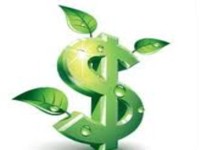Korean Exp-Imp Bank Green Bond Issue Oversubscribed
 Last week Sean Kidney of the Climate Bonds Initiative reported that the Export-Import Bank of Korea (Kexim) had issued its first “green” or climate friendly bond, the first benchmark-sized bond marketed as a green bond outside the multi-lateral development banks.
Last week Sean Kidney of the Climate Bonds Initiative reported that the Export-Import Bank of Korea (Kexim) had issued its first “green” or climate friendly bond, the first benchmark-sized bond marketed as a green bond outside the multi-lateral development banks. Not only was this seen as a big step forward and a big contribution from Korea, touted as the standard-bearer of green growth government, it could be a positive signal from the marketplace that ‘green’ is not a barrier to mainstream investors, but rather an attractor.
According to Kidney demand was strong, with $1.8bn of orders from 100 investors for the $500m offering, a clear signal to other potential issuers that there are hungry green investors out there. US investors took 47%, of the offering, European investors 32% and Asian investors 21%.
Over half (55%) of the buyers were asset managers, 31% went to banks, 5% to insurance and pension funds, 4% to companies and roughly 5% to ‘other’ investors. Overall demand was from both mainstream (30%) and “green” (70%) buyers (such as responsible investment funds).
Notes Kidney “Asset managers are looking for yield and Kexim’s AA3 rating gives them that important extra with, to be frank, very little risk.”
While Kexim has provided few details but has promised to use the proceeds to extend loans to projects that promote the transition to “low carbon and climate resilient growth,” which may include projects that foster clean sources of energy, such as wind, hydroelectric and solar power; or that lower the dependence on fossil fuels.
It also includes projects that reduce carbon emissions or filter waste, such as water treatment projects, according to Finance Asia.
History of Green Bonds
The Green Bond concept was developed in 2007/2008 by Sweden’s SEB Enskilda Bank and the World Bank as a response to increased investor demand for engagement in climate-related opportunities.
According to SEB green bonds are investment vehicles that integrate the fiduciary element of Fixed Income products with climate mitigation and adaptation awareness, giving mainstream investors access to climate-related investment opportunities.
The Green Bond uses existing Issuance Programs and its financial risk, pricing and return profile are in line with ‘normal’ bonds. The proceeds are allocated to eligible Green Bond projects which are selected and/or verified by environmental specialists. Transparency is usually guaranteed to investors through regular reporting of the Green Bond projects.
A Future Trend?
According to Kidney, “Kexim is a blue-chip institution and investors have good reason to think it will deliver on its promises, and most importantly they have promised to get a blue-chip climate research organization to vet their portfolio.”
Whether green bonds will take root in the corporate bonds market is another story. In areas like energy efficiency in buildings, bioenergy and waste and water, green bonds could be a welcomed addition to the investment market, provided acceptable performance criteria were adopted to ensure these investments are genuinely green.
All indications are that that green funds are growing in importance as a significant pool of global capital. An estimated US$3trn has been invested in socially responsible investment projects as of 2010 according to researchers at the Forum for Sustainable and Responsible Investment.
The Kexim foray into this market may be the signal that green bonds might fulfill the interrupted promise once held for carbon trading as a means to accelerate investment in projects that actually make a difference in terms of arresting or mitigating the impacts of climate change.
You can return to the main Market News page, or press the Back button on your browser.

